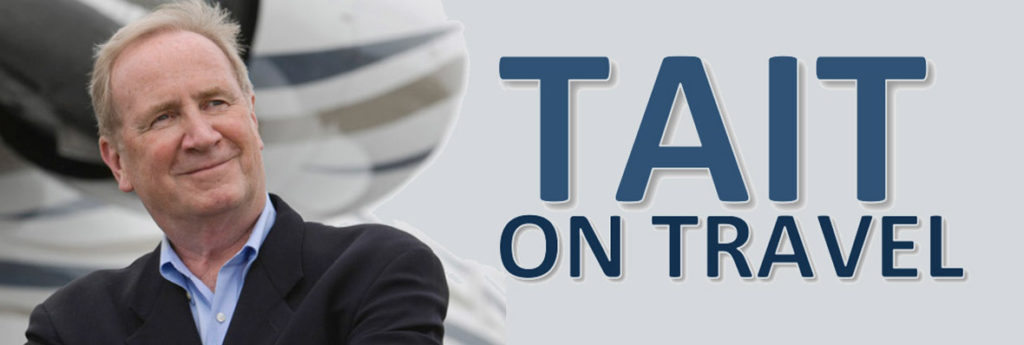In terms of believability, “We’re from the government and we’re here to help you” has to be right up there with a dentist saying, “Relax, this isn’t going to hurt”.
Well last week the closest thing to global governance that exists in aviation -those wonderful people from IATA – reiterated their opposition to overly invasive quarantine measures in commercial aviation such as social distancing, saying this would be “obviated” by the series of layered steps it is proposing. It also again dismissed the idea of social distancing on board aircraft, repeating evidence that the risk of transmission is low due to seating configurations and the use of “hospital-grade HEPA filters”. They called for a “layering of temporary biosecurity measures” to provide the level of consumer confidence necessary to restart travel.
The International Civil Aviation Organization (ICAO) also chipped in with a “roadmap” in support of the Covid-19 Aviation Recovery Task Force, which has been charged with developing global standards for safe flying.
IATA director general and CEO Alexandre de Juniac commented, “The roadmap is the industry’s high-level thinking on safely restarting aviation. Timing is crucial. Governments understand the importance of aviation to the social and economic recovery of their countries and many are planning a phased reopening of borders in the coming months. We have a short time to reach agreement on the initial standards to support safely reconnecting the world and to firmly establish that global standards are essential to success. This will change as technology and medical science advances. The vital element is coordination. If we don’t take these first steps in a harmonized way, we will spend many painful years recovering ground that should not have been lost.”
The “roadmap” includes a number of measures it believes should be taken at the airport and in flight, saying, “There is no single measure that will reduce risk and enable a safe restart of flying. But a layering of measures that are globally implemented and mutually recognized by governments can achieve the needed outcome. A layered approach has worked with safety and with security. It’s the way forward for biosecurity as well.” There sure is a lot of layering going on there!
The proposed departure airport layers include:
• Passenger health information data should be collected by authorities before a flight;
• At airports, terminal access should be restricted to passengers, airport and airline workers;
• At entry points trained government staff should conduct temperature screening;
• Social distancing should be maintained throughout the airport;
• Face coverings to be worn by passengers and staff;
• Self-service options for check-in and bag-drop to limit contact points;
• Congestion-reducing boarding priorities and hand baggage limitations;
• Regular cleaning and sanitization of all high-touch areas
The 35,000 feet, in-flight layers, would see:
• Face coverings/masks for passengers and crew for the duration of the flight;
• Simplified cabin service and the use of pre-packaged catering to reduce contact between passengers and crew;
• Limiting passengers’ movements throughout the cabin by prohibiting queues for toilets – I guess you could simply call this ‘movement limitations’
• More frequent deep cleaning/sanitization of the cabin after every sector.
At the arrival airport, a few more layers await:
• Temperature screenings to take place – again;
• Health declarations and “robust” (government facilitated) contact tracing;
• Increased use of automated procedures for customs and border control, such as mobile applications and biometric technology,
• Reduced congestion via accelerated processing and baggage claim.
Now let’s face it, we all want to see ‘the great unwashed’ heading out to board flights, fill hotels and resorts and/or go cruising again just as soon as is humanly possible. But I seriously doubt that learning of all of these laborious layers is going to make excitedly scream, “Oh wonderful, that sounds really safe – I can’t wait to fly again!”
One prominent airline executive (to protect the guilty I won’t name names) even went on record that he expects all the new layers (aka ‘procedures’) at check-in could mean passengers will have to get to the airport four hours before departure! So, let’s (to use an expression I dislike) ‘unpack’ that statement for a moment. Let’s say you plan to take a 700-mile flight at 10:00 am and live about an hour’s drive from the airport: Based on the above ‘new norm’ prognostications, you would have to be up in time to leave home no later than 5 am. After negotiating the new layers to get into your seat we’ll assume a 15-minute departure delay and 15-minutes of taxi time. So – barring any ATC or gate holds at your destination airport, you should arrive there around noon. What a fun start to the day!
I really don’t mean to be a Grinch about all this, as clearly all the above is going to be necessary to make travel remotely safe again. In fact, even more measures may be needed – the notion that aircraft seatbacks, or not selling the middle seat provides some kind of virus protection is utter nonsense. If that leaves reducing seat density as the only real option then obviously ticket prices will be the biggest thing taking off. Air Canada’s just announced solution of reconfiguring a normally 120-seat A319 with just 54 all business class seats is a great deal – for business class travelers!
So where is it all leading? Air travel certainly isn’t going to get a lot better any time soon and could get worse before it gets better. Driving is the obvious alternative, especially if there is more than one passenger – gas is cheap right now and, if you don’t want to pile up the miles on to your own vehicle, there are some pretty amazing rental deals out there at present. For short-haul travel of under 500-miles, I also really believe that, where trains are not available, luxury buses could become popular.
Or of course you could just stick with ZOOM.

